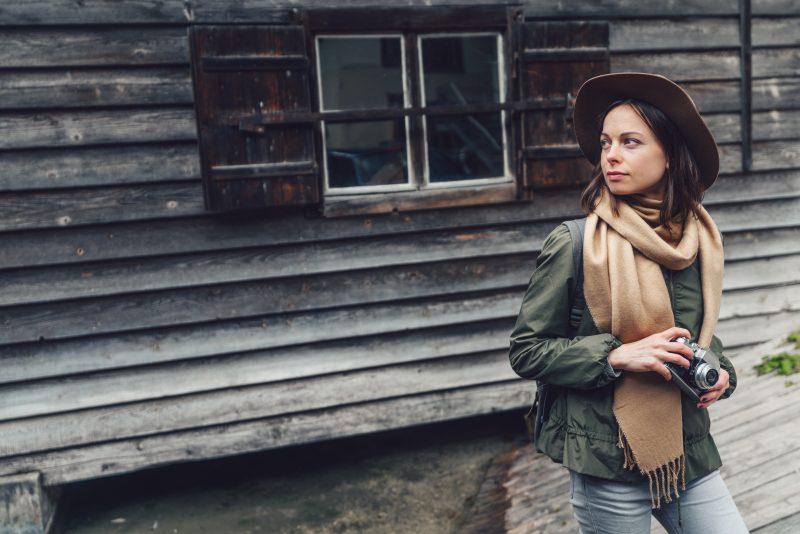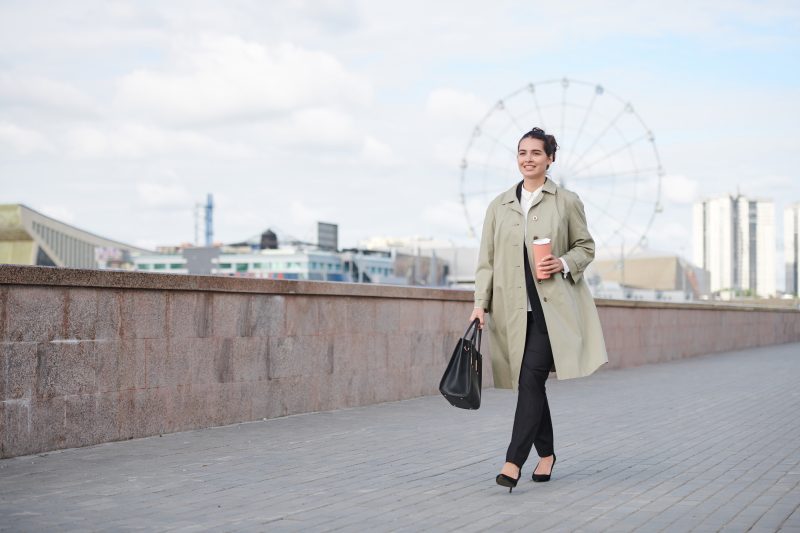The first truly warm day of the year in Britain is a special kind of chaos. The moment the temperature creeps above 18°C, the national character undergoes a dramatic transformation. Suddenly, people who were hunched inside parkas just days earlier are sprawled across any available patch of grass, skin turning an alarming shade of pink, wearing outfits that would make sense on a Greek island but seem wildly optimistic in a country where rain is less a weather pattern and more a personality trait.
I witnessed this phenomenon in full force last weekend. The BBC weather app promised 19°C and “sunny intervals” – practically tropical by British standards – and Hyde Park looked like the aftermath of a clothing explosion.
Men who normally wear sensible jumpers and chinos were suddenly bare-chested, wearing board shorts that hadn’t seen daylight since a package holiday to Tenerife in 2019. Women who’d been wrapped in wool coats for months appeared in tiny sundresses, defiantly ignoring the goosebumps spreading across their arms as clouds periodically blocked the sun.
“Bit warm, isn’t it?” said a man at the ice cream van, visibly sweating despite standing in the shade. He was wearing flip-flops. It was April. In London.

This is the peculiar challenge of dressing for British summer. Our relationship with warm weather is so tenuous, so fraught with longing and disappointment, that when it finally arrives, rational thought goes out the window along with any sense of appropriate seasonal dressing. We oscillate wildly between overdressing for mild days and underdressing for actually warm ones, with very little middle ground for what is statistically our most common summer weather – that specifically British temperature range of 16-22°C that’s neither hot nor cold, just sort of… there.
The fashion industry doesn’t help. Summer collections are designed with Mediterranean heat in mind – wispy fabrics, barely-there straps, shorts so short they’re essentially denim underwear. They’re created for a climate where sunglasses are a necessity rather than an optimistic accessory, where sandals won’t lead to sad, damp feet when an unexpected shower rolls in at 3pm.
I’m guilty of this fantasy shopping myself. Every spring, I buy at least one item that only makes sense in a parallel universe where I spend June through August on the Amalfi Coast rather than shuttling between my flat in Peckham and an air-conditioned office in Soho, watching rain streaks race down the window while I eat a Pret sandwich at my desk.
Last year it was a linen jumpsuit so prone to wrinkling that it looked like I’d slept in it after wearing it for exactly 17 minutes. The year before, an off-shoulder dress that required a specific strapless bra which then required constant adjustment, leading to what looked like a nervous tic as I discreetly tugged at my undergarments throughout a garden party. I’ve long since given up on the fantasy of being a woman who wears white jeans in summer – between public transport, the British propensity for serving red wine at every social gathering, and my own spectacular clumsiness, they’d have a useful lifespan of approximately one hour.
The truth is, British summer requires its own specific wardrobe – one that acknowledges the reality of our climate while still allowing us to feel like we’re participating in the general concept of summer. After years of shivering in inappropriately skimpy outfits or sweating in layers I was afraid to abandon, I’ve finally cracked the code for dressing appropriately for what passes for summer in this country.
The foundation of British summer dressing is the principle of adaptable layers – clothes that can be added or removed as the temperature fluctuates through the 15 distinct weather patterns we might experience in a single afternoon. This doesn’t mean abandoning style in favor of practical hiking gear (though there’s a definite overlap in requirements), but rather being strategic about what those layers are and how they work together.
The ideal British summer top isn’t a tiny camisole or a thick t-shirt, but something in between – a short-sleeved blouse in a natural fabric like cotton or linen, perhaps with a slightly looser fit to allow for airflow on those rare properly hot days. The neckline should be considered carefully – high enough to work under a light jacket when the clouds roll in, but not so high that you’ll feel stifled if the sun decides to make a proper appearance.
My current rotation includes a cotton poplin shirt with sleeves that can be rolled and secured with a button tab (genius design feature), a linen-blend t-shirt that’s slightly more substantial than a standard tee, and what I call a “temperature-regulating blouse” – slightly drapey, with a V-neck that’s neither plunging nor prudish, in a fabric that doesn’t show sweat patches. This last item is perhaps the most crucial weapon in the British summer wardrobe arsenal, as it bridges the gap between looking seasonally appropriate and acknowledging that you might need to walk briskly to catch a train in unexpected humidity.
For bottoms, the British summer sweet spot falls somewhere between full-length trousers and those shorts that prompt concerned relatives to ask if you forgot the rest of them. A culotte or wide-leg cropped trouser offers the best of both worlds – air circulation for warmer moments, coverage for cooler ones, and a silhouette that works with both sandals and closed-toe shoes (crucial for days that start bright and deteriorate into drizzle).
I spent years trying to make tiny denim shorts work for London summers before accepting that they left me freezing in air-conditioned shops and restaurants, inappropriate for impromptu work meetings, and generally uncomfortable on public transport. Now I save them for actual beach holidays and opt instead for what my friend Leila calls “polite shorts” – tailored, mid-thigh length options that don’t require a strategic cardigan tied around the waist to enter a pub for lunch.
Dresses are the traditional summer go-to, but the key for British weather is choosing styles that don’t leave you vulnerable to unexpected weather shifts. The tiny-strapped sundress is a meteorological gamble in a country where sunshine can dissolve into chilly breeze in minutes. Far more practical is what I call the “substantial summer dress” – one with actual sleeves (even short ones), a fabric with a bit of weight to it, and a silhouette that works with layers over or under as needed.
My most-worn summer dress isn’t some floaty, barely-there number, but a short-sleeved midi in a cotton twill that’s substantial enough to hold its shape in a breeze, won’t go transparent in unexpected rain, and works equally well with bare legs and sandals or with a light jacket and trainers. It’s not the most exciting garment I own, but it’s the one that actually gets worn repeatedly through our temperamental summer because it addresses the reality of 19°C being what passes for “quite warm actually” in Britain.
The outer layer is perhaps the most crucial consideration for British summer dressing. The fantasy is that you won’t need one at all – that you’ll float through June, July, and August in nothing but sundresses and linen shirts. The reality is that some form of outer layer remains essential for approximately 85% of our supposed summer.
The perfect British summer jacket is light enough that you won’t immediately overheat if the sun makes an appearance, substantial enough to actually provide warmth when needed, and – crucially – must fold or roll up small enough to fit in your bag when not needed. Bonus points if it’s water-resistant enough to withstand a brief shower, because carrying both a jacket AND an umbrella feels like admitting defeat.
My solution is a lightweight cotton-linen blazer in navy (shows less rain spots than lighter colors) that’s unlined for breathability but still provides actual warmth. It looks intentional rather than purely practical, which helps maintain the illusion that I’m dressing for style rather than for the meteorological roller coaster that is a typical British summer day.
Footwear presents perhaps the greatest challenge of British summer dressing. The optimism of a sandal meets the pragmatism of knowing puddles are never more than a few hours away. I’ve lost count of the times I’ve left the house in open-toed shoes based on morning sunshine, only to be squelching home with sodden feet and ruined leather after an afternoon downpour.
The solution isn’t to abandon summer footwear entirely, but to choose options that can handle our particular climate challenges. Canvas trainers offer more breathability than their winter counterparts while still protecting from unexpected puddles. Leather sandals with actual straps (rather than flip-flops or slides) stay on during sudden dashes for shelter. Loafers bridge the gap between seasons – summery enough with bare ankles, substantial enough for days that feel more like October than July.
I now plan summer outings with footwear contingencies built in. If I’m determined to wear proper sandals, I check the hourly forecast obsessively and have been known to pack a backup pair of fold-up ballet flats in my handbag. It’s not glamorous, but neither is limping home with blisters because your feet swelled in unexpected heat or trying to navigate rain-slicked pavements in completely impractical shoes.
The accessories that complete British summer dressing need to pull double duty as both style elements and practical weather management tools. A lightweight scarf isn’t just a fashion statement but a neck warmer for when you’re sitting in a pub garden and the sun disappears behind a cloud. Sunglasses are essential even on days that aren’t particularly bright – they’re as much for dealing with the five minutes of blinding sunshine that bursts through cloud cover as they are for actually sunny days.
And then there’s the bag consideration – the need for something large enough to accommodate the layers you’ll inevitably need to remove and replace throughout the day, but not so enormous that you feel like a pack mule on those rare days when actual summer weather materializes. I’ve settled on a medium-sized crossbody with a wide strap that doesn’t dig into bare shoulders, large enough for a light cardigan and small umbrella, small enough to not scream “I’M PREPARED FOR ALL WEATHER EVENTUALITIES” too loudly.
The true art of British summer dressing lies in embracing our uniquely ambivalent relationship with warm weather while still finding joy in seasonal changes. It’s about acknowledging that our version of summer often bears little resemblance to the Mediterranean ideal while still allowing ourselves to celebrate the subtle seasonal shifts that constitute a British summer.
Last weekend, as the temperature hit a magnificent 20°C, I met friends for lunch at a pub with a garden. Around me were the usual summer extremes – men in briefest shorts despite clearly freezing, women in tiny dresses huddled under pub heaters, a few confused tourists in actual warm weather gear looking uncomfortably hot.
I wore cropped wide-leg trousers in a lightweight cotton, a short-sleeved shirt that buttoned high enough to be office-appropriate but could open lower for actual sunshine, and leather sandals that wouldn’t disintegrate in light rain. In my bag were folded a light cotton cardigan and a small umbrella, because I’m not new here. When the inevitable afternoon cloud cover rolled in, bringing the temperature down by what felt like 10 degrees in minutes, I was prepared but not bulkily overdressed.

“You always look so appropriate for the weather,” said my friend Tomas, who was himself wearing a winter-weight denim jacket over a T-shirt, with shorts and boots – an outfit for at least three different climates simultaneously. “How do you get it right?”
The truth is simply this: I’ve accepted our weather for what it is, rather than what I wish it was.
I’ve stopped dressing for the Instagram version of summer and started dressing for the actual British version – the one where 19°C genuinely is “quite warm actually,” where a single day might require both sunscreen and a waterproof layer, where the height of summer sophistication isn’t minimalism but rather strategic preparedness disguised as style.
That doesn’t mean abandoning summer joy or color or the general lightening of fabrics and spirits that comes with the season. It just means approaching it with the wry pragmatism that characterizes the best of British style – the ability to adapt to our peculiar climate while maintaining a sense of humor about the whole endeavor.
So here’s to British summer fashion that acknowledges our reality – that celebrates the modest wonder of temperatures that wouldn’t impress anyone from genuinely hot countries but that have us declaring it “absolutely boiling” and panic-buying ice lollies the moment the thermometer creeps above 20°C. That prepares for the inevitable while still hoping for the best. That allows us to participate in the general concept of summer without pretending we live in Santorini.
And if we get that mythical proper heatwave, the kind that makes newspaper headlines and prompts national conversations about whether fans should be classified as essential items? Well, then I’ll be as unprepared as everyone else, digging out that completely impractical linen jumpsuit and pretending I knew it would come in handy all along.



